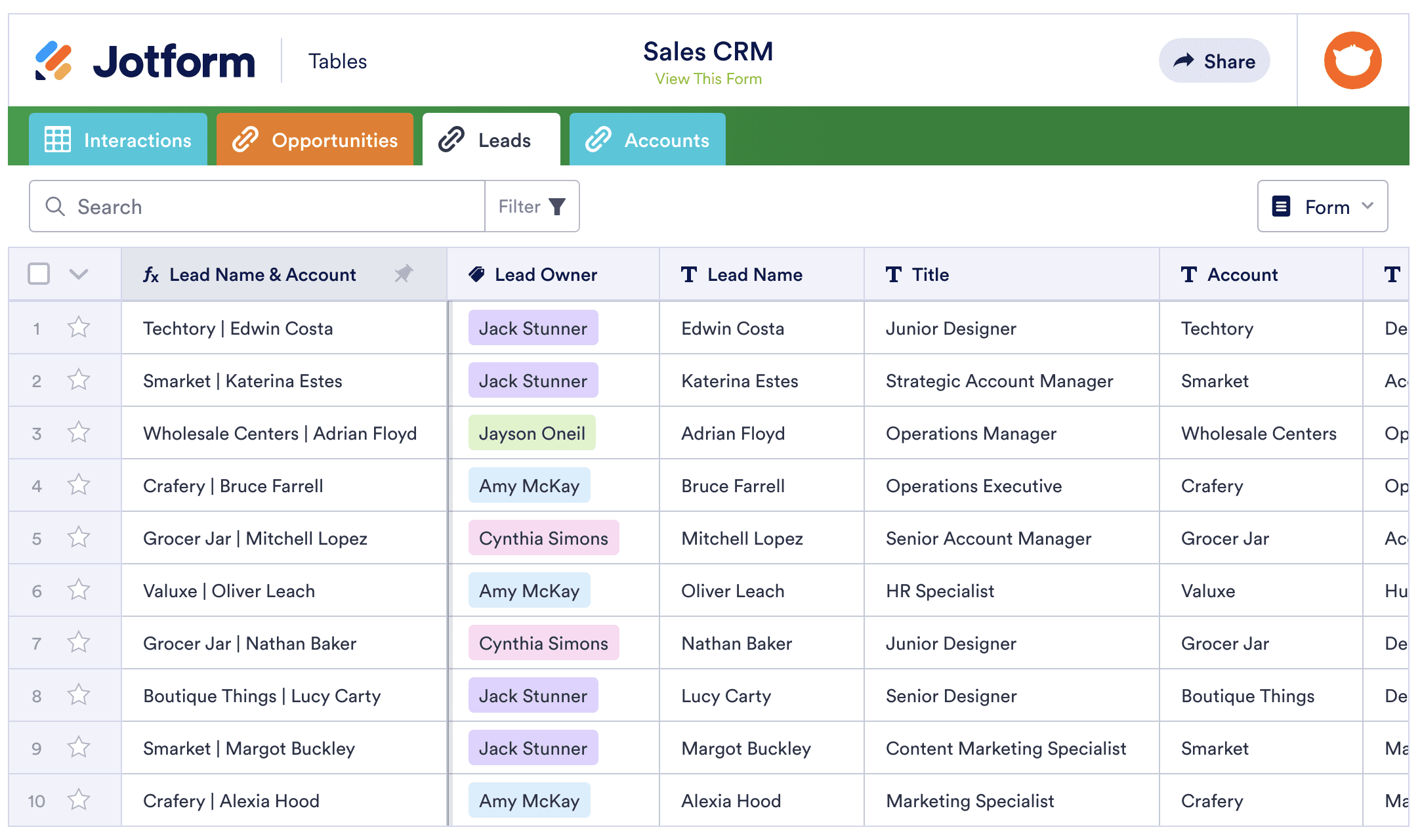Making a sale is a long game that requires many steps over many days, weeks, or months — sometimes even years. To make the sales process as efficient as possible, it’s important to have a system in place that organizes all of your information.
Lead tracking is the process sales and marketing teams use to document each of their sales leads with relevant information about where they are in the funnel. Tracking provides sales teams with a system they can use to follow up with their prospects so that no one slips through the cracks. And tracking benefits the marketing department because it gives them information about exactly what brought a lead into the sales funnel so that they can better assess marketing ROI.
Forbes reports that B2B companies with sales and marketing teams working in tandem achieve 24 percent faster revenue growth and 27 percent faster profit growth over a period of three years than organizations with siloed sales and marketing departments.
Lead tracking takes the guesswork out of the next steps so you can close more deals.
What data to track
When tracking sales leads, the data you collect and measure depends on the needs of the marketing and sales teams. You can track all information possible, just in case you can find a use for it later, or focus only on specific information to determine KPIs.
Some common types of data to track include
- Lead name and contact information
- Lead source
- Lead engagement with any marketing initiatives, such as blogs, social media posts, live events, or ads
- The stage of the sales funnel a lead is in
- Qualifying information, such as how quickly a lead has moved through the funnel, their budget, how soon they want to close a deal, etc.
- Details about how they’ve been contacted (email, phone, in person, trade show) and when
- Notes about each interaction
- Your last contact with them
- The next action
- The deadline for that action
- The potential size of the deal
- Projected closing date
Every facet of business benefits from organization, and lead tracking has the potential to transform all of your sales and marketing processes.
How to get started with lead tracking
Here’s how to begin tracking leads and converting them into sales.
Define who qualifies as a lead
Before you can start tracking leads, you must define what a lead is. You then need to determine where the leads you want to track are coming from.
You’ll have to store all of your leads in a database that will require manual entry, at least initially. It’s up to you if you want this database to include every potential buyer (ranging from prospects who reached out to you directly, to leads who clicked on ads, to referrals) or just specific sources.
Select a lead tracking option
There are a lot of lead tracking methods to choose from. The right one for you depends on your database size, your budget, and what your team’s specific needs are.
CRM software that specializes in lead tracking could streamline your operation. Salesforce and Pipedrive are two incredibly popular platforms that work with organizations of all industries, types, and sizes.
Jotform Tables offers an all-in-one lead tracking and workflow management solution for free, with pre-built templates that you can customize to your organization’s liking.
The robust tool allows users to manage target accounts, opportunities, leads, and action items — all from a single workspace. Comprehensive data sorting options allow for quicker analysis. The platform even has a way to define the estimated value to better prioritize leads, assign tasks to specific sales team members, and build a comprehensive roadmap, all without requiring coding.
Jotform also offers a number of lead generation forms that you can integrate directly into your website, including client intake forms.
How to best track sales leads
Once you’ve decided what your CRM strategy will be, test it and make changes before rolling it out. Once the sales team is on board and things are running smoothly, you can do the work of nurturing your leads.
Nurturing consists of a set of activities that increases the likelihood your leads will convert into customers. This includes the following:
- Call logging can help you and your team easily recall the specifics of previous communications. Jotform has a client call log template to document this kind of information.
- Email tracking allows you to test different communication styles with leads to determine what’s most effective.
- Social and in-app engagement can help you keep track of how you’ve interacted with leads on all of your channels — as well as how they’ve responded — so that you can develop precise engagement strategies.
The key to a good sales strategy is good timing, and that won’t be possible in our high-volume world without lead tracking. An effective CRM and sales lead tracking strategy will help you map out exactly what to do next, keep you from forgetting leads, follow up at the right time, keep track of communication strategies, and let you easily analyze and assess what’s working — and what’s not — in your sales and marketing.
Set up your own sales CRM on Jotform now.
















Send Comment: